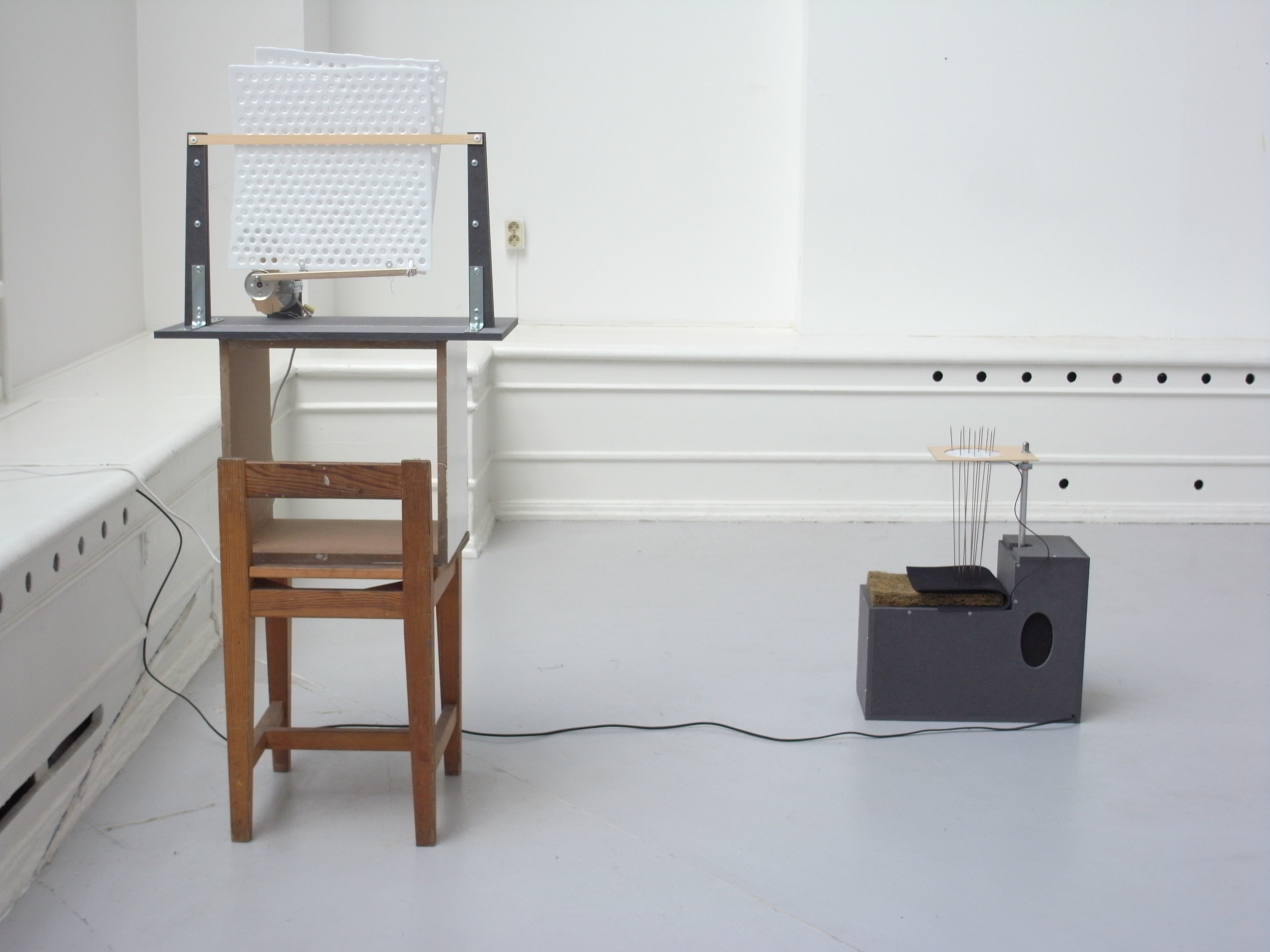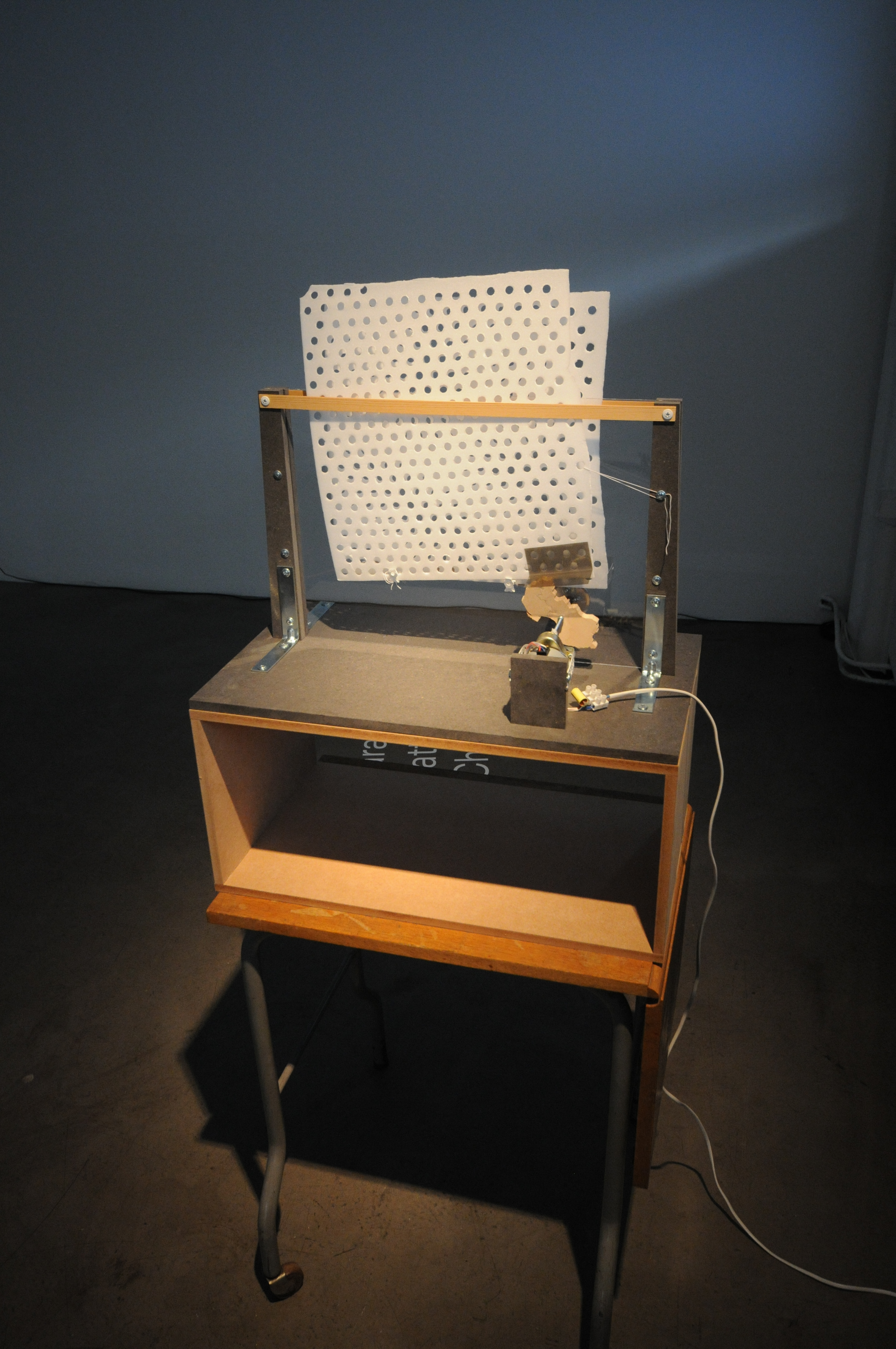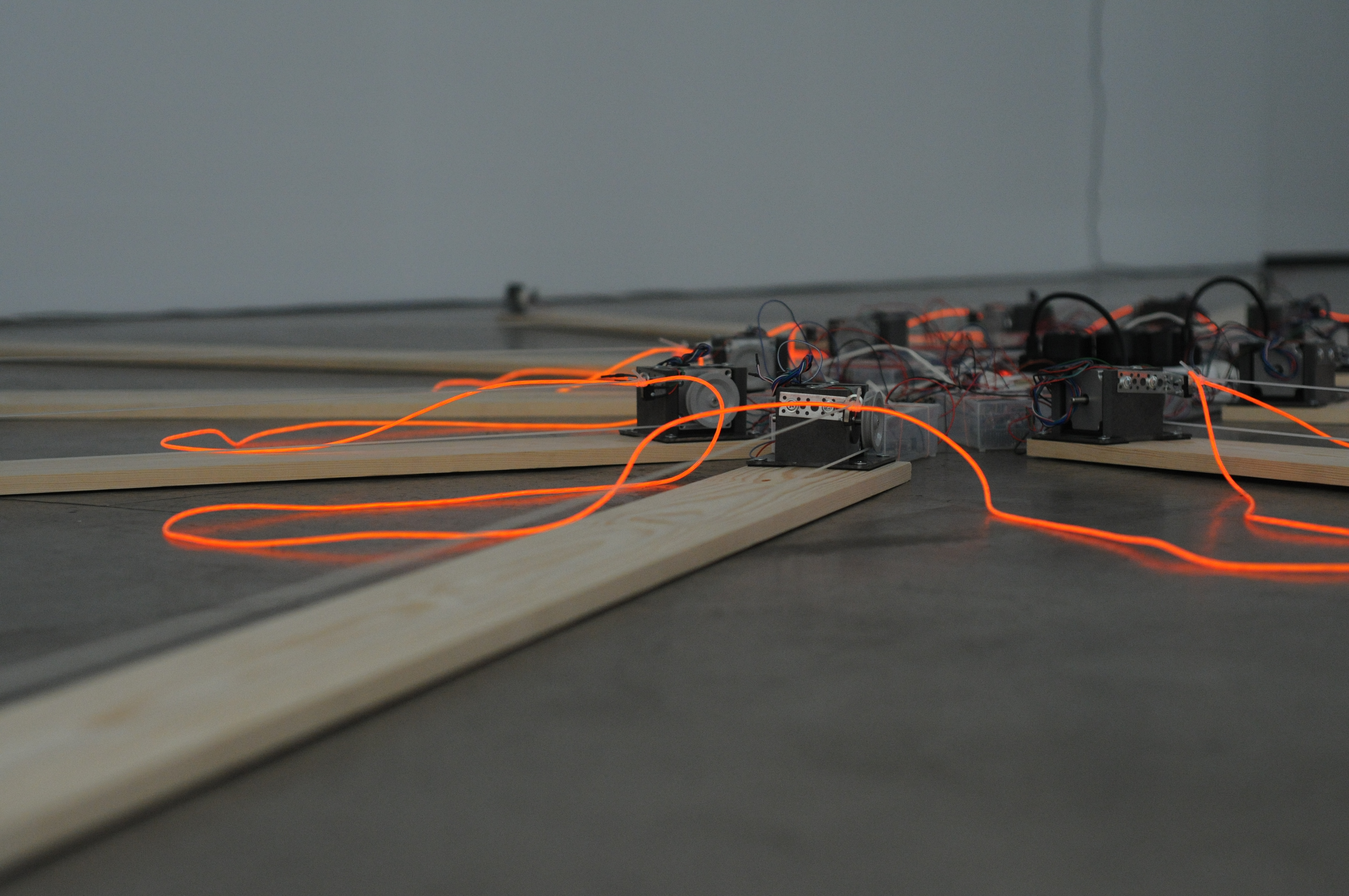In 2009, artists Unni Gjertsen and Liv Strand embarked on a journey to Armenia – a land with idiosyncratic connections to ancient times and early Christianity, ambiguously situated somewhere in the southern region of the Caucasus. In the origins of the journey were questions on nationalisms and their relation to memory and the mediatory body between them.
Through video and text-based works, Gjertsen addresses the function of memory and challenges understanding of geography. For instance, in The Road to Oxiana, Station III: Armenia the artist explores – by deconstruction and new juxtapositions – how conceptions of places come to pass and become fixed collective bodies. Strand’s kinetic-installations elaborate on physical forces, stories and abstractions. Her work Quicksand frontier under-standing brings the mechanisms of nationalism to an abstract form mediated by the visitor’s physical presence. Tales of Fraternity, Power and Time is accompanied by a publication which documents the artists’ journey to Armenia.
Unni Gjertsen is a Norwegian artist based in Oslo. She attended the Trondheim Academy of Art and the University of Oslo. Her work has been presented in centers such as the Nordische Botschaften, Berlin; Henie-Onstad ArtCentre, Bærum; Kasteel van Gaasbeek, Belgium; MUHKA, Antwerp; UKS, Oslo; Göteborgs Konsthall; Liljevalchs Konsthall; IASPIS, Stockholm; Baltic Sea Cultural Centre, Gdansk and Konsthall C in Stockholm.
Liv Strand is a Swedish artist based in Stockholm. She studied at the Södertörn University College, University College of Stockholm, Royal University College of Fine Arts in Stockholmand at the Trondheim Academy of Fine Art. Her works have been exhibited at ROM for kunstog arkitektur, Oslo; Färgfabriken, Stockholm; UKS, Oslo; Konsthall C, Hökarängen; GalerieLeonard & Bina Ellen, Montreal; Gallery F 15 in Moss and Centro Cívico San Francisco,Bilbao among others.






